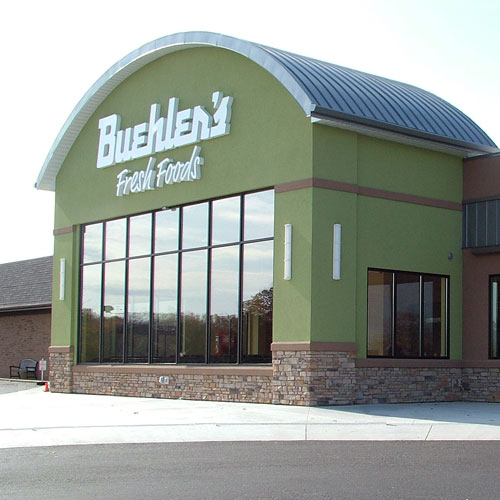
“I want to change the world,” says Kiere DeGrandchamp. Big talk, but the engineer by training means it. As president of High Performance Homes, he’s long believed that net-zero homes are the future, and now his company’s teaming up with the Links at Gettysburg, a 300-lot development in Gettysburg, Pennsylvania, to offer a series of standardized net-zero homes starting at $400,000. If the venture takes flight—and it’s likely to, considering the homes’ reasonable price tags and the fact that they’re naturally built to save money—the company will be quick to take the same idea elsewhere and eventually help make net-zero the norm.
The Links at Gettysburg is located in a good market. The development is built around a golf course and features tennis and boccie courts, horseshoe pits, walking trails, a pond with a waterfall, and a community center—in other words, everything an up-market homebuyer could want. A different builder built the community’s first 150 homes, but now DeGrandchamp is in on the action and catering to the energy-conscious, be they first-time homebuyers or empty nesters. “The demographic runs across the gamut because net-zero makes sense,” he says.
The central appeal of net-zero homes is that they carry no energy costs, and they primarily do this thanks to a building envelope that’s tighter than tight. Instead of conventional framing, each home uses structural insulated panels.

“I have six inches of foam or extruded polystyrene between two layers of oriented strand board, creating a constant thermal break all around the outside of the home,” says DeGrandchamp, who also uses blow and spray insulation—open- and closed-cell—to ensure each home is completely tight. “That gives it the strength and rigidity—and a high R-value—that lead to a high-performing home. Once you have high-quality insulation on the inside, it’s just a matter of creating the interior systems so [that] the home functions properly. You use all the best products, and you put them together in the best package, and the homes don’t have electric bills.”
Among the products DeGrandchamp relies on are Dow Powerhouse Solar Shingles on the homes’ roofs. “Usually, when you think of solar, you think of two-by-four roof panels, which are visually clunky,” he says. “Dow’s solar product is integrated into a shingle so [that] it looks like a shiny part of the roof. With waterproofing-membrane and thin-film technology, it produces as much energy as I need on every home and keeps the home dry.”
Another product DeGrandchamp favors is the NA21 air-filtration system, made by Stevensville, Maryland-based Nautic Air, and it comes standard in every home he’s building. It filters down to 0.0001 microns, after which its filtered air is passed into a chamber containing ultraviolet lights situated near honeycombed metal covered with titanium dioxide. When the light hits the titanium dioxide, a chemical reaction kills allergens and even viruses. “It makes it hospital clean inside the home,” DeGrandchamp says.

Additionally, the homes are smart—very smart. Motion sensors in each garage kick-start a fan that eliminates carbon dioxide when a driver pulls in. More motion sensors in each bathroom check the available water temperature when someone walks in, and if it’s not hot enough, a system replaces the water so that when a person turns the faucet on, it doesn’t have to run to warm up. Also, distributed audio systems and electronic door locks will allow homeowners to unlock their front doors or turn on their stereos from their smartphones. “It’s the wave of the future,” DeGrandchamp says.
Other companies are building net-zero homes on a custom basis, but according to DeGrandchamp, “it’s easy to throw a lot of money at a home and make it net-zero.” He’s doing it on a production level, which is rare, and his process makes his homes more affordable across the board. “That’s why I can build anything from a 1,800-square-foot home all the way to the ridiculous size,” he says.
DeGrandchamp’s model home for the Links at Gettysburg is 6,000 square feet and priced near $1 million. He finished it in early 2015 and has been actively marketing the development since the spring. Once the lots at the Links at Gettysburg are sold, he’ll take the concept elsewhere. “Most people are saying [that] it’s about time someone put this together,” he says. “We’re on the cutting edge of a trend where everyone will have to be within 10 years.”



